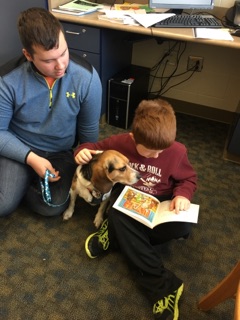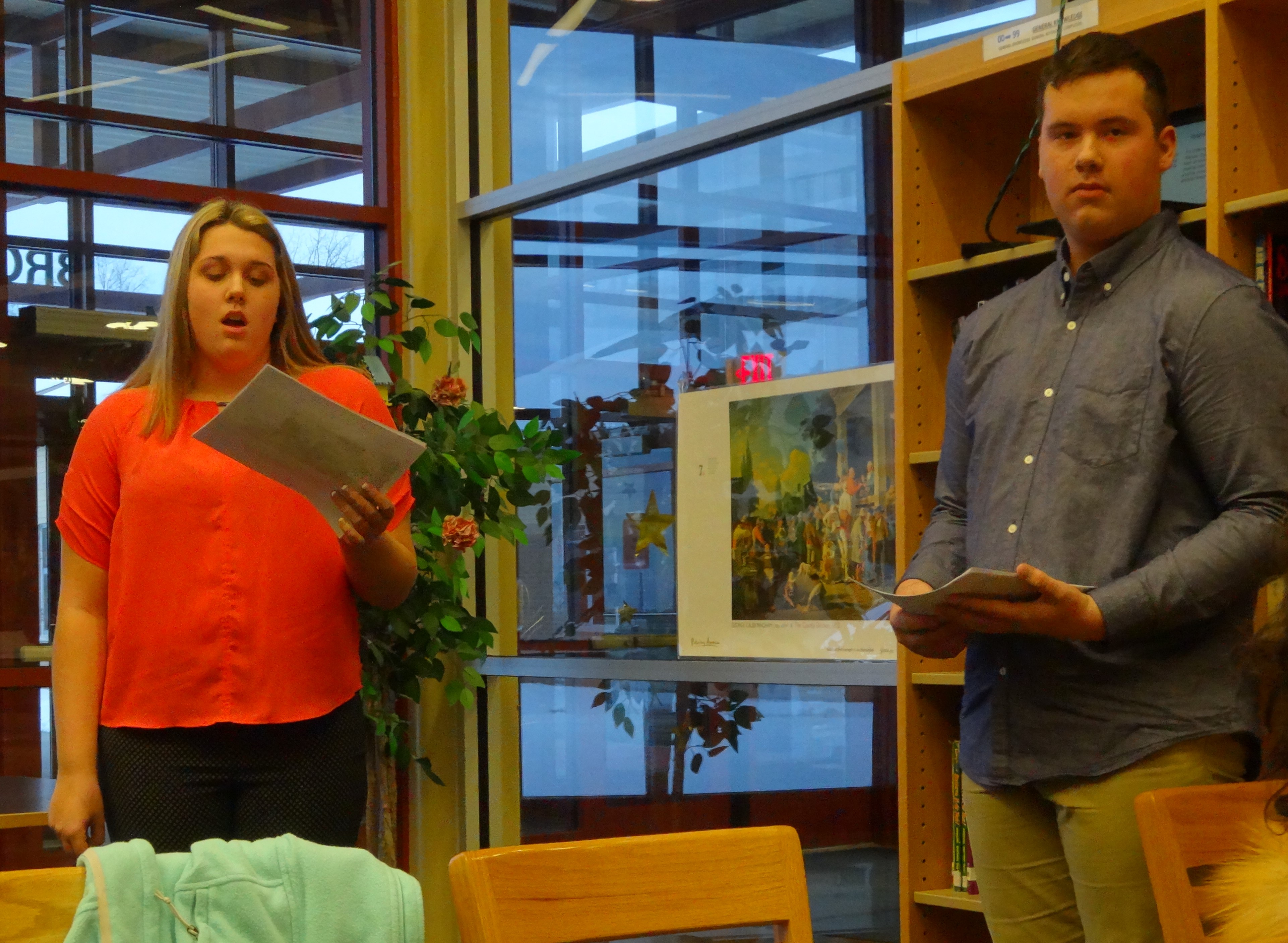A study by two Brookfield High School students who examined how reading to a therapy dog impacted elementary students produced intriguing but not definitive results.
Dakota and Emily Obermiyer conducted the study at Brookfield Elementary School for Lake-to-River Science Day, a science fair at Youngstown State University, and were encouraged by fair judges to continue their work.

Dakota Obermiyer sits with Beezus and a Brookfield Elementary student who participated in a reading study. Photo provided by the school.
It looks like Brookfield school officials would welcome a return engagement by the Obermiyers and Beezus, the Pet Partners-registered therapy dog who was central to the study.
The Obermiyers won their field of study at the science fair, advancing to the Buckeye Science and Engineering Fair, held by the Ohio Academy of Science, on April 7 in Columbus; and State Science Day, May 14 in Columbus, Dakota said.
The six-week study with middle-level readers in grades one through three looked at one group that read to Beezus and another group that read to Emily.
Student reading skills were assessed before and after the study through iReady, the assessment program the school uses. The students also took surveys to judge their attitudes toward reading.
Students read for 10 to 15 minutes at a time two days a week.
“Data gathered from the surveys showed a strong correlation to the notion that reading to a therapy dog does in fact cause a child’s attitude towards reading to positively increase,” the Obermiyers, who are sophomores, said in their 38-page study.
However, the increase in the ability to read was nearly identical in each group, 4.96 percent for those who read to Beezus and 4.91 percent for those who didn’t. The difference is statistically insignificant, the Obermiyers said, and the study did not prove that reading with a therapy dog increased a child’s reading level. While there could be several

Emily and Dakota Obermiyer present the findings of their reading study at the March Brookfield Board of Education meeting. Photo by Joe Pinchot/NEWS On the Green.
factors that could have contributed to the results, including the short length of study, the long assessment-test period – 90 minutes to two hours – and undiagnosed learning disabilities, one thing is clear: there is a need for more study.
“Of course, I would have Beezus back,” said elementary Principal Stacey Filicky, the study’s supervisor. “The kids and I loved having her here.”
Beezus had a “calming effect on the kids” and contributed to a no-pressure atmosphere, Filicky said.
The principal also could picture Beezus playing an expanded role at the school, such as working with children who have emotional difficulties.
“I know I always feel better after some time with my pets,” she said.

Dakota and Emily Obermiyer stand with the Brookfield Elementary students who participated in a reading study. Students are, front row, from left: Kayla Kikel, Ashten Keith, Isabella Montalvo, Lillian Trump, Gabriella Poggi, Mianna Cinicola and Teeaghan Kane. Back row: Greyson Berena, Daniel Bartha, Mason Davis, Blake Lough, Lane Pegg, Logan Huffman, Damien Raver and Shane Hoffman. The photo was provided by the school.









